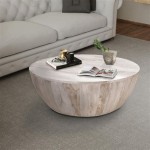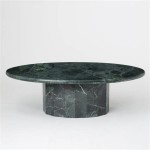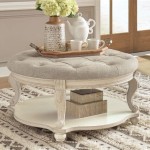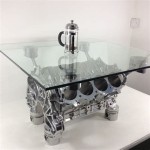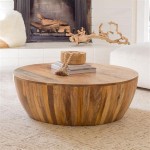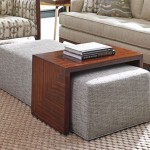How to Paint a Dining Table Distressed White with a Wooden Top
Painting a dining table distressed white, particularly when coupled with a contrasting wooden top, can transform its aesthetic from dated to chic. This project requires a combination of careful preparation, strategic painting techniques, and a bit of artistic flair to achieve the desired aged appearance. This article provides a comprehensive guide to achieving a professional-looking distressed white finish on a wooden dining table, while preserving or enhancing the natural beauty of the tabletop.
Before embarking on this project, it is crucial to assess the current condition of the dining table. This assessment will inform the necessary preparatory steps, including cleaning, sanding, and any repairs that need to be addressed. The type of wood, the existing finish, and any potential damage will all influence the materials and techniques employed throughout the process.
Gathering the necessary materials is a critical first step. At a minimum, the project requires the following items: sandpaper in varying grits (80, 120, 220), a sanding block or orbital sander, tack cloths, primer (specifically for wood), paint (white, in a matte or chalk finish), clear coat sealant (matte or satin), paintbrushes (various sizes), painter's tape, rags, mineral spirits (for cleaning brushes), and optional distressing tools (such as chains, hammers, or wire brushes). Safety glasses and a dust mask are also essential for personal protection.
Proper ventilation is paramount. This project generates dust and fumes, so working in a well-ventilated area, preferably outdoors or in a garage with open doors and windows, is crucial. Cover the work area with drop cloths to protect the surrounding surfaces from paint splatters and dust.
Preparation is Key: Cleaning and Sanding
The first step in preparing the dining table is a thorough cleaning. Use a mild detergent and water solution to remove any dirt, grease, or grime. Rinse thoroughly with clean water and allow the table to dry completely. This cleaning ensures that the subsequent sanding and painting steps will adhere properly to the surface.
Sanding is the next essential step. The purpose of sanding is to create a slightly rough surface that the primer and paint can grip onto. Begin with a coarser grit sandpaper (80 or 120 grit) to remove any existing varnish or glossy finish. Focus on sanding evenly across all surfaces of the table, paying particular attention to areas that are chipped or scratched. A power sander can be used for larger, flat surfaces, but hand sanding is often necessary for intricate details and corners.
After the initial sanding, switch to a finer grit sandpaper (220 grit) to smooth out the surface. This ensures a smoother, more uniform finish. The goal is not to remove all imperfections, as these can contribute to the distressed look, but rather to create a surface that is receptive to paint.
Once the sanding is complete, thoroughly remove all sanding dust. Use a vacuum cleaner with a brush attachment to remove loose dust, followed by wiping down the entire table with a tack cloth. Tack cloths are specially designed to pick up even the finest particles of dust, leaving a clean surface ready for priming.
If the wooden tabletop is intended to retain its natural wood appearance, protect it with painter's tape. Apply the tape carefully along the edges where the tabletop meets the table frame or legs. Ensure the tape is firmly pressed down to prevent paint bleed-through.
Painting and Distressing Techniques
Priming is a critical step in achieving a durable and long-lasting finish. Apply a thin, even coat of primer to all surfaces that will be painted white. Choose a primer that is specifically designed for wood surfaces and that is compatible with the type of paint being used. A high-quality primer will help to block stains, prevent tannin bleed-through (especially on certain types of wood), and provide a better surface for the paint to adhere to. Allow the primer to dry completely according to the manufacturer's instructions, typically 24 hours.
Once the primer is dry, lightly sand the primed surface with a fine-grit sandpaper (220 grit or higher) to remove any imperfections or brushstrokes. Wipe away the sanding dust with a tack cloth before proceeding to the painting stage.
Apply the first coat of white paint to the primed surfaces. Use smooth, even strokes, following the grain of the wood. Avoid applying the paint too thickly, as this can lead to drips and uneven drying. Allow the first coat to dry completely, again following the manufacturer's instructions. Typically, 2-4 hours are needed for drying.
Once the first coat is dry, lightly sand the painted surface with a fine-grit sandpaper. This will help to smooth out any imperfections and create a better surface for the second coat of paint. Wipe away the sanding dust with a tack cloth.
Apply a second coat of white paint, using the same techniques as the first coat. Ensure that the paint is applied evenly and smoothly. Allow the second coat to dry completely. Depending on the desired level of coverage, a third coat may be necessary.
Distressing is the process of intentionally creating imperfections in the paint finish to give the table an aged and worn look. There are several techniques that can be used to achieve this effect. One common method is to use sandpaper to selectively remove paint from areas that would naturally experience wear and tear, such as edges, corners, and raised details. Use a medium-grit sandpaper (120 grit) to begin with, and then switch to a finer-grit sandpaper (220 grit) to feather out the edges of the distressed areas.
Other distressing techniques include using a scraper or putty knife to remove paint, tapping the surface with a chain or hammer to create dents and dings, or rubbing the surface with a wire brush to create a textured effect. Experiment with different techniques to find the look that is most appealing. It's advisable to practice on a scrap piece of wood before applying these techniques to the actual dining table.
Strategically determine where to distress the table. Common areas include the edges of the tabletop, the legs, the aprons, and any decorative carvings. Focus on areas that would naturally experience wear and tear over time. The goal is to create a subtle, authentic-looking distressed finish.
Sealing and Finishing Touches
Once the distressing is complete and the desired look has been achieved, it is essential to seal the painted surface with a clear coat sealant. This will protect the paint from chipping, scratching, and staining, and will also provide a durable and easy-to-clean finish. Choose a clear coat sealant in a matte or satin finish for a more subtle look, or a gloss finish for a more polished look. A water-based polyurethane sealant is often a good choice, as it is durable, easy to apply, and dries clear.
Apply the clear coat sealant in thin, even coats, using a clean paintbrush or a spray gun. Follow the manufacturer's instructions for drying time between coats. Typically, two to three coats of sealant are recommended for optimal protection.
If the wooden tabletop has been left natural, consider applying a wood stain or sealant to protect it. Choose a stain color that complements the white paint and enhances the natural beauty of the wood. Apply the stain according to the manufacturer's instructions, and then seal it with a clear coat sealant.
Once the clear coat sealant is completely dry, carefully remove the painter's tape from the edges of the tabletop. Use a utility knife to score along the edge of the tape before removing it, to prevent the paint from chipping or peeling. Inspect the entire table for any imperfections or areas that need touch-ups. Use a small brush to apply touch-up paint as needed. Allow the touch-up paint to dry completely before applying a final coat of sealant to the touched-up areas.
Clean the dining table with a soft cloth and a mild detergent and water solution. Avoid using harsh chemicals or abrasive cleaners, as these can damage the paint finish. Regularly dust the table to keep it clean and prevent the buildup of grime. With proper care and maintenance, a distressed white dining table with a wooden top can remain a beautiful and functional piece of furniture for many years to come.
The entire project, from preparation to final sealing, involves numerous steps and considerations. A methodical approach, attention to detail, and the use of high-quality materials are all paramount to achieving a successful and aesthetically pleasing outcome.

Whitewashed Reclaimed Wood Dining Table Satori Design For Living

The Beginner S Guide To Distressing With Chalk Paint By Annie Sloan Thinking Closet

How To Distress Furniture My New White Dining Table Thrifty And Chic

Farmhouse White Dining Room Table Miss Mustard Seed

Whitewashed Reclaimed Wood Dining Table Satori Design For Living

Painting A Dining Room Set With Chalk Paint The Purple Painted Lady

How To Distress Furniture My New White Dining Table Thrifty And Chic

How To Paint Stain Whitewash Distress A Fancy X Farmhouse Table By Ana White Building Our Rez

Old World Chippy Distressed Paint Finish Ana White

Whitewashed Reclaimed Wood Dining Table Satori Design For Living
Related Posts

